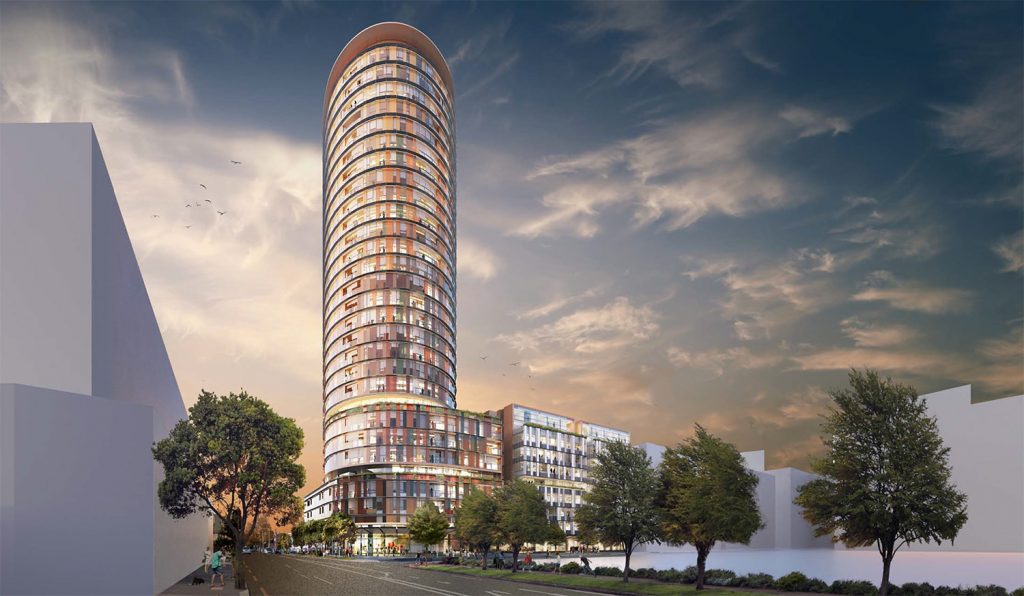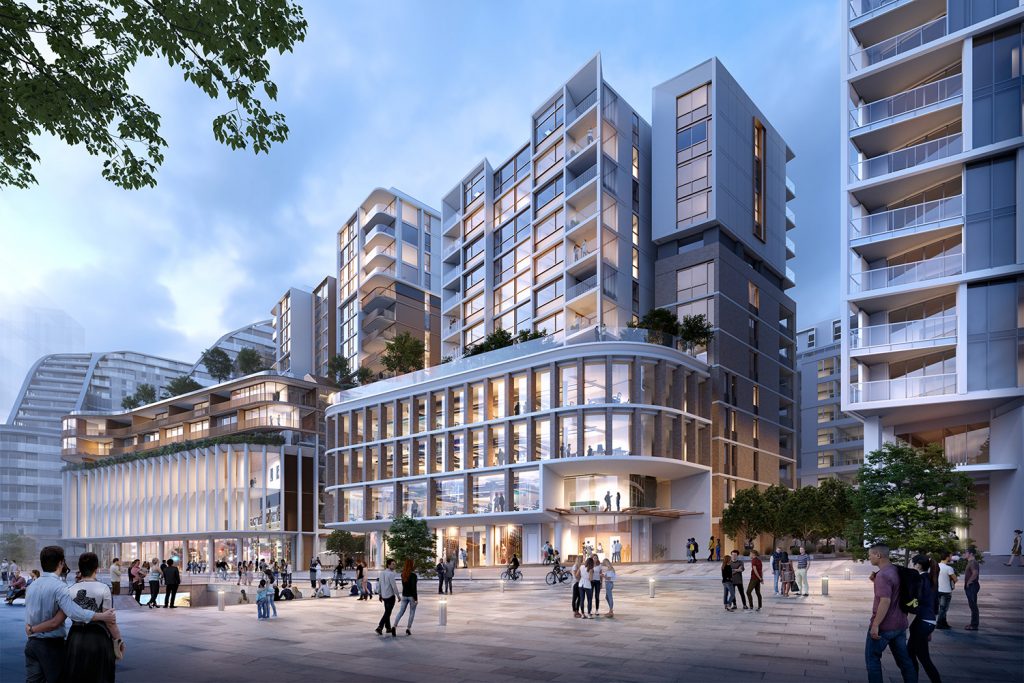As the City of Sydney is looking ahead to 2050, Council should also keep sight of some of the more immediate priorities for the Green Square Town Centre to fully realise the potential as a contemporary town centre.
Office Workers- The completion of high-quality public domain, social infrastructure and additional housing should make Green Square more compelling for office tenants.
A Green Space for Green Square- The Drying Green Park will provide active and passive recreation opportunities for residents and a place for local workers to enjoy a sunlit space during lunch hours throughout the year.
Active Recreation: Aquatic and Leisure Centre- The Gunyama Park Aquatic and Recreation Centre, designed by Andrew Burges Architects in association with Grimshaw and TCL will see new indoor and outdoor swimming pools, playground and picnic facilities, a fitness training circuit and a multipurpose sports field.
Public Celebration: Station Plaza- A public plaza that leads to Green Square Train Station provides a natural location for community gathering – a place for celebrations and performances.
A Diverse Nighttime Economy- Our view as city shapers is that a night time economy that is dispersed across the city supports a strong, safe and resilient city. A diverse night time economy in the Town Centre can emerge as the planning controls promote active streets, and areas for public congregation and celebration.
Light Rail Link to Central Sydney: The City of Sydney have a place holder for the light rail corridor linking Central Sydney to Green Square Town Centre, terminating at the Library Plaza in front of the Mirvac development. This priority corridor for transport has the potential to improve travel times for journeys into Central Sydney and better connections to cross-regional services.


